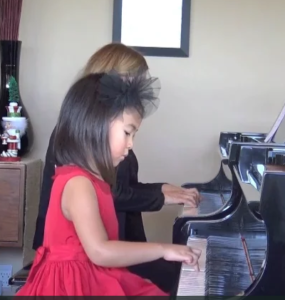This is the second post in the Neural Net series.
Learning is about making connections. The neural networks in our brains form combinations of sights and sounds and concepts and movements, and link them together to form abilities.
Playing piano is an optimum example of this kind of integral learning as it utilizes mental concepts, use of the senses, physical movement, and inspiration or motivational energy.
This concept of integral learning can also be described as: “Cells that fire together wire together.” (1) Daniel Coyle writes in the Talent Code:
It applies to a specific skill. For example, a beginning student listens daily to the recording and watches other students play the piano. This provides the motivational energy. Next we want to connect this internalization of the sound with the physical balance at the piano or “ready”. The mental concepts necessary at this point are finger #1 ready on “Do”. The sensory feeling of the finger touching the piano as it plays the rhythm is the tactile connection. We then bring awareness to the learning by directing the students attention to the feeling and to the sound they are producing.
When the students learn deeply and fully this way, the myelin sheath will wrap around the circuits so that these neurons will fire together and the ability becomes internalized. These abilities form the skill which will be the basis for all of their piano playing.
Daniel Coyle in The Talent Code writes:
The component piece is the twinkle A rhythm on finger #1. Next this is linked together with the rhythm played on the other fingers, and finally the whole sequence is memorized.
The student is able to link progressively larger groupings together. Each component or group has in its neural net the aural, physical, tactile, mental, and emotional parts linked together. By repetition of this pattern, the ability to perform it with accuracy and consistency is developed. This can be called pattern recognition. * Next, the ability can then be applied to the next pattern such as on the next finger with the same rhythm, physical/tactile movement.
This simple example of how the neural net forms a component of ability can then be applied to learning of more and more complex patterns. Additionally this is an example of why teaching from a integral learning perspective is so important. It is about connecting the dots.
* Pattern recognition is a branch of computer machine learning that focuses on the recognition of patterns and regularities in data.
Here is a link to another post on myelin: The Talent Education Code – Myelin
Notes:
1. This is referred to as “Hebbian Learning”, and is discussed in How to Create A Mind by Ray Kurzweil, p. 80
2. The Talent Code by Daniel Coyle, p. 32
3. The Talent Code by Daniel Coyle, p. 84
Books Quoted in this Post:





